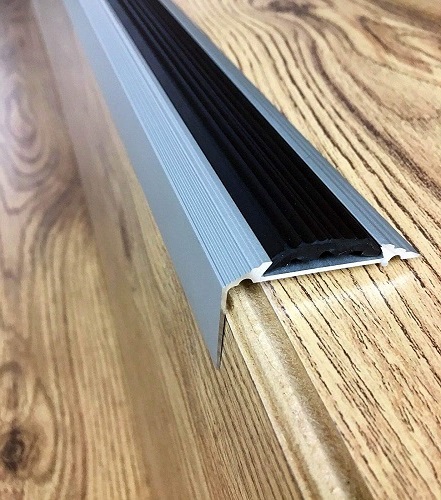The Benefits of Installing Stair Nosing in Your Home
Stair nosing is a small but essential component of a staircase that provides numerous benefits to homeowners. Stair nosing is the piece of material that covers the front edge of each stair step, providing a finished look and adding an extra layer of safety to your home. In this article, we’ll explore the benefits of installing stair nosing in your home.
- Safety The most important benefit of stair nosing is the added safety it provides. Stair nosing provides a clearly defined edge to each step, making it easier to see the edge of the stair, even in low-light conditions. This can help prevent trips, slips, and falls on the stairs, especially for those with visual impairments or mobility issues.
- Durability Stair nosing is typically made from durable materials such as aluminum, rubber, or vinyl, which can withstand heavy foot traffic and resist wear and tear. The added protection also reduces the likelihood of wear and tear on the actual stair tread, extending the lifespan of your stairs.
- Aesthetics Stair nosing can add a finishing touch to your staircase, complementing your home’s decor. It is available in a range of materials, colors, and finishes, allowing you to choose the perfect look to match your interior design.
- Increased Property Value Installing stair nosing can increase the value of your home. It demonstrates a commitment to safety and upkeep, which can be attractive to potential buyers or renters. A well-maintained staircase is an important aspect of a home’s overall appearance and can positively impact the perceived value of your property.
- Compliance with Building Codes Stair nosing is required by building codes in many regions to comply with safety regulations. If you are installing or renovating your staircase, check with your local building codes to ensure that your stairs meet the safety requirements.
- Easy Installation Stair nosing is relatively easy to install and can be done by a DIY enthusiast. You can purchase pre-made stair nosing in a range of sizes and materials, or you can choose to have custom nosing created to fit your specific needs.
In conclusion, installing stair nosing in your home can provide numerous benefits, including increased safety, durability, and aesthetics. It is an affordable and easy way to add an extra layer of protection to your staircase, while also increasing the overall value of your property. If you’re considering renovating your stairs, be sure to include stair nosing in your plans to ensure the safety and longevity of your home’s staircase.
Tips:
- Choose the Right Material Select a durable and slip-resistant material for your stair nosing to ensure the safety and longevity of your staircase. Common materials for stair nosing include aluminum, rubber, and vinyl.
- Measure and Cut Carefully Before installing stair nosing, measure each step carefully to ensure a proper fit. Cut the nosing to the appropriate length and angle using a saw or other cutting tool.
- Clean the Stair Treads Clean the stair treads thoroughly before installing stair nosing to ensure proper adhesion. Use a degreaser or other cleaning agent to remove any dirt, grease, or debris from the surface.
- Use an Adhesive Apply a high-quality adhesive to the back of the stair nosing to ensure a secure and long-lasting bond. Follow the manufacturer’s instructions for application and drying time.
- Secure with Screws For added security, use screws in addition to adhesive to secure the stair nosing to the stair tread. This can help prevent the nosing from shifting or coming loose over time.
- Choose a Color and Design Consider the color and design of your stair nosing to ensure that it complements your home’s decor. Stair nosing is available in a range of colors and designs to suit different styles and preferences.
- Maintain and Repair Regularly Regularly maintain and inspect your stair nosing to ensure that it remains in good condition. Repair any damage or wear and tear promptly to prevent further deterioration or safety hazards.
- Follow Building Codes and Safety Standards Ensure that your stair nosing meets building codes and safety standards in your region. This can help ensure the safety and compliance of your staircase, as well as protect you from liability issues.
- Consider Professional Installation If you are unsure about installing stair nosing yourself, consider hiring a professional to install it for you. This can help ensure a proper and secure installation, as well as save you time and effort.
- Replace when Necessary Replace your stair nosing when it becomes worn, damaged, or no longer provides adequate protection. This can help ensure the continued safety and durability of your staircase.
Check our range of Stair Nosings.




